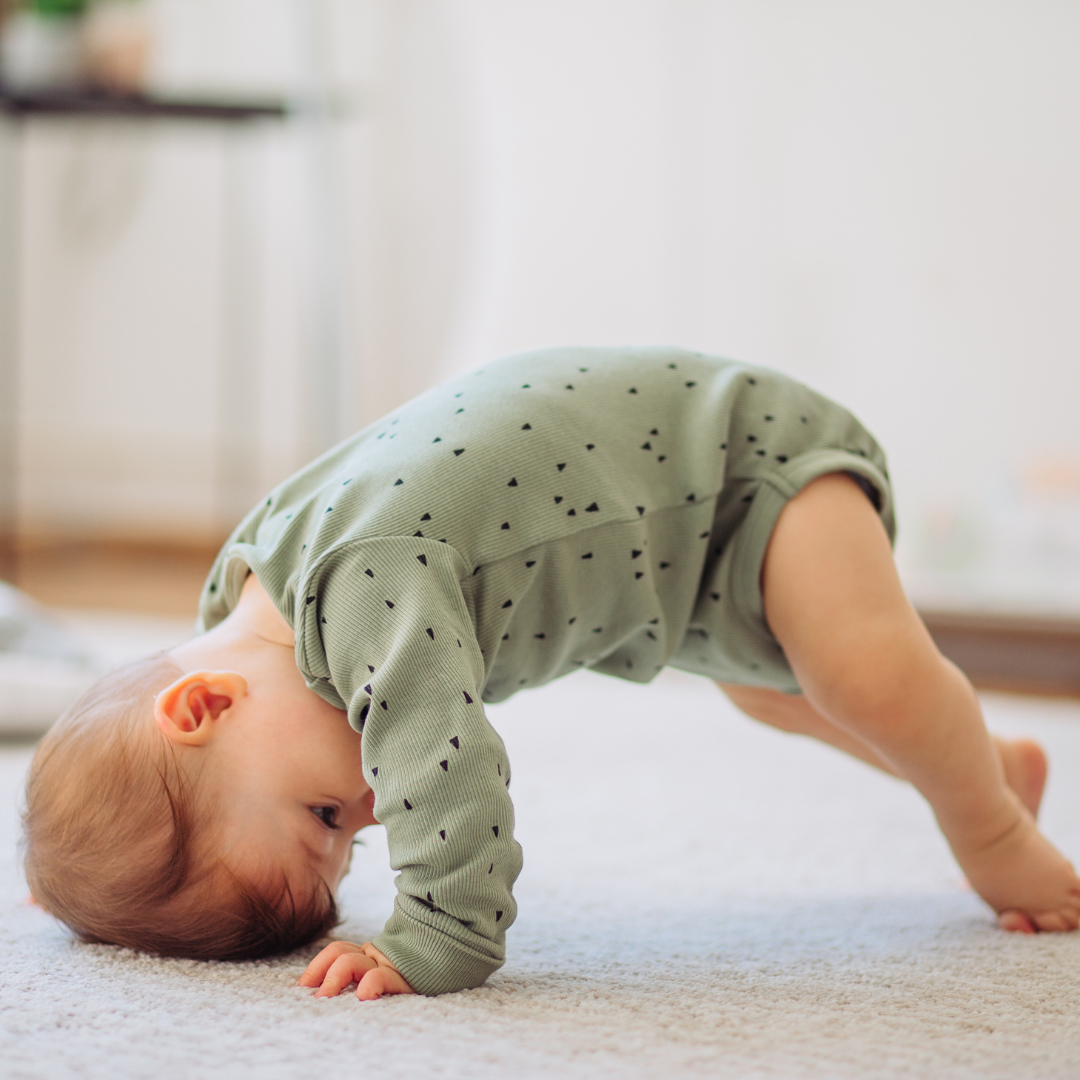13 Things You Need to Know as Your Child Starts Crawling and Cruising
Life seemed a lot simpler when your baby just laid on their back looking around, or sat and played with their toys without being able to run away from you, don't you agree?
It’s a very exciting milestone when you get to watch them start crawling while they improve their balance, speed and coordination! But when it comes to preparing your home (and life), check out our top 13 things you need to know and prepare your home for when your child starts crawling and cruising around.
Here are our top tips for when your child starts crawling and cruising.
First and foremost, our top pro tip is to get down on your hands and knees and look around to see what is within reach of your little one's eyesight and hands!
Kids will put anything and everything into their mouth – dog food, elastics, bottle caps, furniture felt pads...the list is endless. This stage is also known as the flooding stage where anything that is low to the ground and could be pulled down off a shelf or climbed onto, for example, should be moved to a new or higher location.
Babies are becoming extra curious here, so if they can grab it they will!
Safety First: Pad sharp furniture corners.
You can use pool noodles or purchase bumpers specially designed for this purpose. Though bumps and bruises will happen in time, you can mitigate some of the more serious injuries such as bumping their head on sharp corners.
Cover electrical outlets to prevent little fingers from reaching inside.
Purchase plastic outlet covers to plug your unused outlets. If you have a hard time getting those covers out it will be impossible for little baby fingers!
Tie up loose electrical or window cords which are strangulation hazards.
Stairs: Install safety gates at the top and bottom of all stairways so they can’t crawl up from the bottom and tumble back down.
Add locks to toilets and cabinets that contain electronics, heavy items, cleaning products or medications (babies love opening cupboards - especially ones they aren’t supposed to be in!).
Secure large furniture to the wall to stop them from tipping over if they are bumped into or pulled on once your little one starts pulling themselves to stand.
Have your child start walking and crawling on carpet or padded areas first to prevent injuries when they inevitably topple over.
If you have a large area of hardwood floors, make sure there are no splinters, nails or sharp edges. You may want to consider a non-slip rug for this purpose. Also, consider dressing them in pants/leggings so that their knees are not exposed!
Keep a stash of wipes and sanitizer in your diaper bag to wash their hands after they have been crawling around - especially if you are out and about.
Bring out a new toy to keep their attention if you find you need to keep your little one entertained to prevent them from escaping for a moment.
Have a stash of new and exciting toys they haven’t seen before and only bring them out during these occasions.
Be alert at all times! Even taking your eyes off your baby for 1 minute can lead to dangerous situations, so make sure someone always has their eyes on them.
Need to get some work done? Use your blow-up pool as an area they can play in that is padded and safe where they can’t hurt themselves if they fall over.
Put a few of their favourite toys in there to add extra fun.
Time for dinner? Even simple tasks like cooking up a meal can seem like a daunting task when trying to multitask and chase after your little one (I know you’re nodding your head right now!). Try putting them in their highchair with some finger foods, sing songs and talk to them while you get some cooking done as a break!

